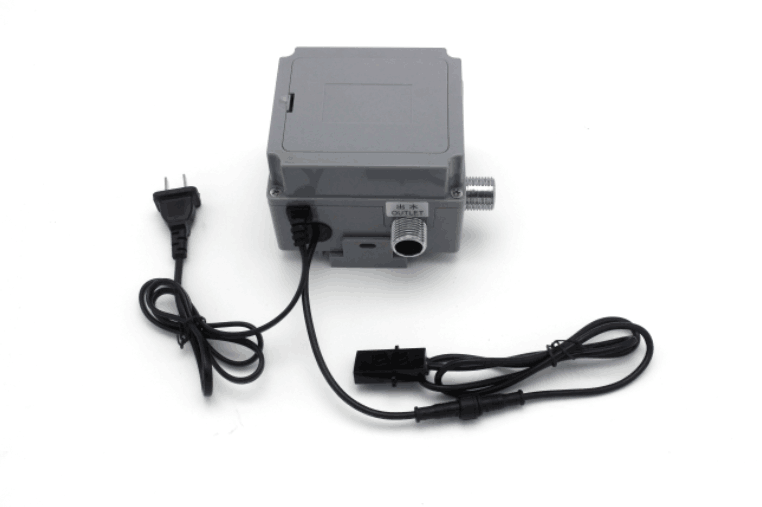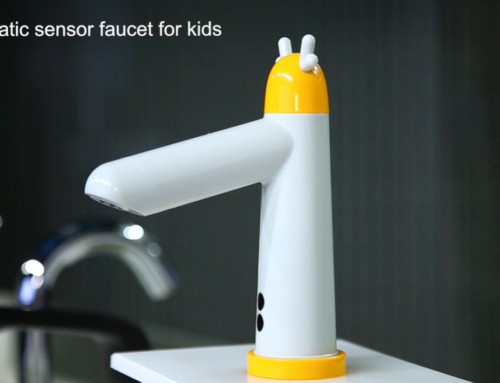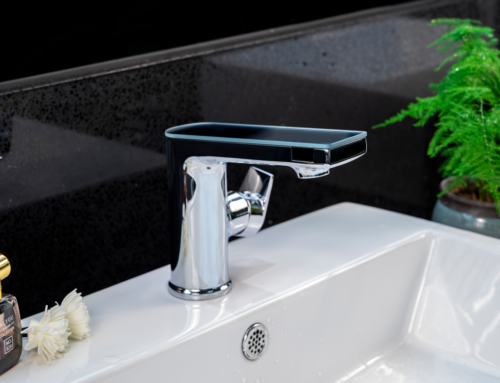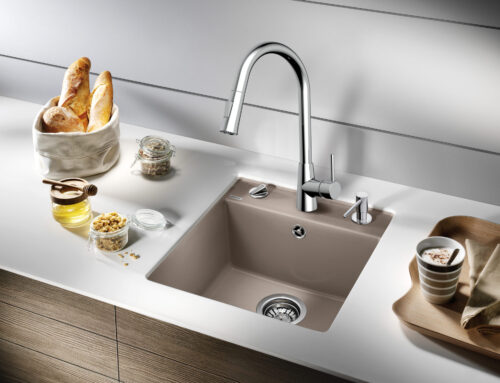What’s the automatic faucet control box? The automatic faucet control box is a square box that sits or mounted underneath the sink as part of a typical sensor faucet installation process. Rajeyn has different control boxes for both basin and kitchen faucets and the most popular one is RJY-K06. Here takes RJY-K06 as an example. The control box is like a hub which enables water to flow IN (from main water supply) and OUT (to sensor faucet).
What’s included in control box? When you open up a control box, you will find a solenoid valve, battery case/transformer (adapter) and infrared signal wire connection.
What’s the technical information for the solenoid valve?
- Rating voltage: DC6V
- Working voltage: DC4.5V-6.6V
- Type: Pulse valve
- Resistance: 17Ω±0.5Ω(20°C)
- Pulse width: 35ms
- Medium temperature: 1-75℃
- Response time: turn on≤0.15s; turn off≤0.5s
- Working pressure: 0.05-0.8MPa
- Thread size: G1/2”
How about the Power Source? There are three options for power source.
#1: DC6V powered by 4 pieces AA alkaline batteries.
#2: AC220V powered by main power.
#3: Both DC6V and AC220V. The battery is stand-by. If the main power AC220V is off, the batteries will automatically switched on. This way makes sure the product will 100% work even though there’s no main power.
Infrared Sensor Types. This control box can be used for almost all types of sensor basin faucets. Generally speaking, there are two types sensor connected to the control box. Type 1: Infrared sensor on faucet body. And Type 2: Infrared sensor on faucet spout.
Infrared Sensor Technical Data?
- Power supply: DC 4.3~6.4V
- Static power: ≤0.15mw (≤25uA)
- Default sensing range: 280mm. Adjustable sensing range: 180mm-380mm (reference: 29.7cm*29.7cm white board). The sensing range error: ±10% of the rated sensing range. Sensor distance adjustable by remote controller.
- Max output current: 800mA; Output voltage: 3.9V-6V; Output pulse width: 35ms.
- Low voltage alarm: Working voltage≤4.4±0.2, sensor indicator flashes to remind replacing batteries.
- Sensing range stability: Sensing range rangeability is ±5﹪ if working voltage decreases from DC6.4V to DC4.3V; Sensing range rangeability is ±15﹪ if temperature increases from 0℃ to +45℃.
- Anti-interference performance: There’s no malfunction if more than one systems working together at the same time. There’s no malfunction if there are commonly used electrical appliances nearby. Sensing range rangeability is ±10﹪ with filament lamp slants beyond 1 meter.
- Shock resistance: hit or beat is not allowed.
- Direct strong light should be avoided.





